Safety and Security in Schools
Vaping & Camera Security for School Districts
As security concerns on campus, in class, and on buses grow, finding reliable and innovative ways to find threats with advanced warning. As leaders in law enforcement and education work together to keep students and schools safe, new tools allow them to share alerts on dangerous events in real-time, location information to send help quickly, and AI-powered identification tools to catch unauthorized persons on campus. School safety is a top concern for every district across the board.
Most recently, vaping has become a huge issue. DOF recently partnered with a security company to help address the ongoing student vaping epidemic within schools. This camera uses air quality sensors to detect, manage, and prevent vaping. Simple installation, automated alerts, privacy-enabled. Vape detection helps capture vape events, and allows schools to take action to improve the health and safety of students and staff.
Protecting your school from Cyber Hacking


Protecting your school from cyber hacking requires a multi-layered approach to ensure the security of your systems, networks, and data. Here are some key steps you can take to prevent cyberattacks:
1. Educate staff, students, and parents: Raise awareness about cybersecurity threats and best practices. Train staff and students on identifying phishing emails, strong password creation, secure browsing habits, and safe online behavior. Involve parents in these efforts to ensure consistent cybersecurity practices at home and school.
2. Implement strong passwords and multi-factor authentication (MFA): Enforce the use of strong, unique passwords for all accounts and systems. Enable MFA whenever possible to add an extra layer of security, requiring users to provide additional verification factors such as a fingerprint or one-time passcode.
3. Keep software and systems up to date: Regularly update operating systems, software applications, and firmware on all devices, including servers, computers, and network equipment. Applying patches and updates helps protect against known vulnerabilities.
4. Use robust firewalls and antivirus software: Install and regularly update firewalls and reputable antivirus/anti-malware software on all devices connected to your school network. Configure firewalls to restrict unauthorized access and block suspicious traffic.
5. Secure your network: Implement a secure network infrastructure, including encrypted Wi-Fi networks (WPA2 or WPA3), strong network passwords, and separate guest networks. Restrict network access to authorized users and devices.
6. Regularly backup critical data: Establish a comprehensive data backup strategy and schedule regular backups. Store backups in a secure off-site location or in the cloud. Regularly test the restoration process to ensure data integrity.
7. Restrict administrative privileges: Limit administrative access to only authorized personnel. Implement the principle of least privilege, ensuring that users have only the permissions necessary for their roles.
8. Enable network segmentation: Divide your network into separate segments, separating critical systems and sensitive data from general user traffic. This helps contain potential breaches and limit the spread of an attack.
9. Conduct regular security assessments: Perform routine vulnerability assessments and penetration testing to identify weaknesses in your systems and networks. Address any identified vulnerabilities promptly.
10. Develop an incident response plan: Create a documented plan that outlines the steps to be taken in the event of a cybersecurity incident. Assign roles and responsibilities, establish communication channels, and conduct drills to ensure readiness.
11. Foster a culture of security: Encourage a culture of cybersecurity awareness and accountability throughout the school community. Regularly remind staff, students, and parents about the importance of cybersecurity and the role they play in maintaining a secure environment.
12. Stay informed and adapt: Stay updated on the latest cybersecurity threats and trends. Follow reputable sources, attend training sessions, and participate in relevant professional development activities to enhance your knowledge and adapt your security measures accordingly.
Remember, cybersecurity is an ongoing effort, and it requires the collective involvement of the entire school community to maintain a secure environment. Contact us for a no-charge evaluation now.
Need Cybersecurity Help Now?

Fast support



